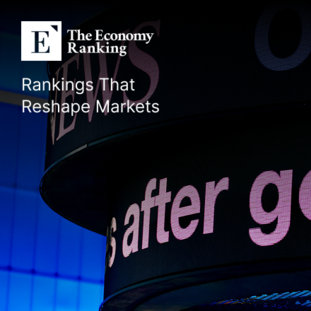How Universities Justify Their Massive Advertising Budgets
Input
Modified
Universities, particularly private and for-profit institutions, spend millions on advertising to attract students, justifying it through tuition revenue and increased competition While elite institutions rely on reputation, mid-tier and online schools depend on aggressive marketing to stay competitive The sustainability of high marketing expenditures is debated, as some institutions struggle to balance costs with enrollment revenue
Higher education institutions in the United States collectively spend billions on advertising. Reports indicate that major universities allocate $1–2 million per month on digital marketing alone. This spending encompasses online ads, search engine marketing, social media campaigns, and traditional media placements.
For example, Southern New Hampshire University (SNHU) and Western Governors University (WGU) reportedly spend over $100 million per year on advertising. This raises a critical question: Is this money justified?

The Justification: Tuition Revenue vs. Marketing Costs
Most universities justify their advertising spend through tuition revenue. With tuition fees ranging from $10,000 to $50,000 per year, acquiring just a few hundred students through aggressive marketing can generate significant revenue.
- Return on Investment (ROI): If an online program costs $20,000 per student and the university spends $2,000 per student acquisition, they still net $18,000 per student.
- For-Profit Institutions: Schools like University of Phoenix and DeVry operate under a business model, where aggressive advertising ensures consistent student intake and profitability.
- Public Universities: State-funded schools also invest in marketing to secure government funding, as more students mean higher federal and state subsidies.
Advertising Strategies Used by Universities
To maximize visibility and enrollment numbers, universities deploy multiple advertising strategies:
- Digital Advertising:
- Google Ads and Facebook campaigns target prospective students searching for degree programs.
- Retargeting strategies ensure that users who visit a university's website continue seeing ads later.
- Social Media Influencers:
- Some institutions collaborate with student influencers to enhance their brand image and reach younger demographics.
- Traditional Media:
- Billboards, television commercials, and print ads in education-focused publications remain part of many universities' strategies.
- Email Marketing & Webinars:
- Direct outreach campaigns and virtual events help engage prospective students and convert leads into enrollments.
- Scholarship & Financial Aid Promotions:
- Many schools use scholarship offerings as a marketing tool, positioning their programs as affordable to entice students.
The Role of Increased Competition
Another major driver behind high marketing budgets is competition.
- The shrinking number of college-age students has intensified the race for enrollments.
- Online programs have blurred regional boundaries, forcing universities to compete globally.
- Traditional nonprofit universities are now competing with bootcamps, online certifications, and alternative education platforms, making visibility crucial.
Are Universities Profitable?
Despite high tuition revenue, profitability varies depending on the type of institution.
- Elite Institutions (Harvard, Stanford, MIT) – They rely on reputation, endowments, and research funding rather than advertising.
- Private Nonprofits (Small Liberal Arts Colleges) – Many struggle financially despite tuition revenue, leading some to close permanently.
- For-Profit Universities (University of Phoenix, DeVry) – These schools rely on volume-based enrollments, and advertising is essential for sustaining revenue.
The Debate: Is This Spending Sustainable?
The sustainability of high ad spending remains a debated issue.
- For elite universities? No need. Harvard and MIT have strong brand recognition.
- For mid-tier and online schools? Necessary. They must attract students aggressively.
- For struggling universities? Questionable. Some institutions spend more on ads than they recoup in tuition, leading to financial instability.
Additionally, the increasing skepticism toward higher education—with rising tuition costs and student debt concerns—raises questions about whether students will continue to enroll at the same rate in the future. Universities may need to rethink their models, focusing more on affordability, program flexibility, and real-world outcomes rather than pure advertising spend.
The Future of University Marketing
Looking ahead, universities may shift their focus toward more sustainable marketing models. Emerging trends include:
- AI-Driven Personalization: Leveraging artificial intelligence to tailor marketing content to individual student preferences.
- Content Marketing & Thought Leadership: Universities publishing research and expert analysis to organically attract students.
- Corporate Partnerships: Institutions aligning with businesses to offer industry-aligned degrees that appeal to working professionals.
- Lower-Cost Digital Strategies: Reducing reliance on expensive PPC (pay-per-click) campaigns and focusing more on organic growth.
University marketing budgets have skyrocketed in recent years, with some institutions spending over $100 million annually on advertising. While the investment often pays off in tuition revenue, the long-term sustainability is uncertain. As higher education evolves, institutions must balance aggressive marketing with financial viability to ensure they remain competitive without overspending.
In an era where student demographics are shifting and alternative education models are gaining traction, universities must adopt smarter, more cost-effective strategies. The schools that succeed will not necessarily be those that spend the most but rather those that adapt best to the changing landscape of higher education.





















